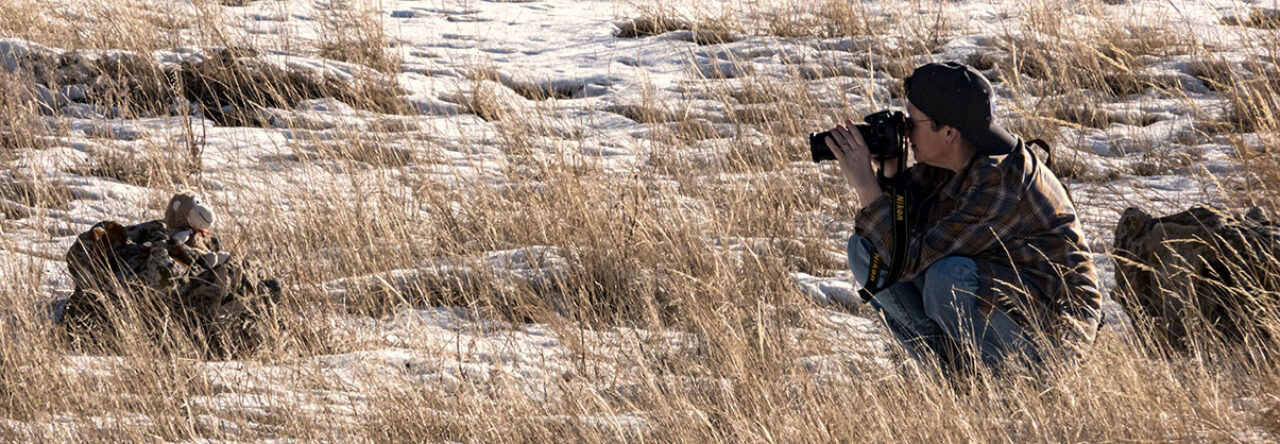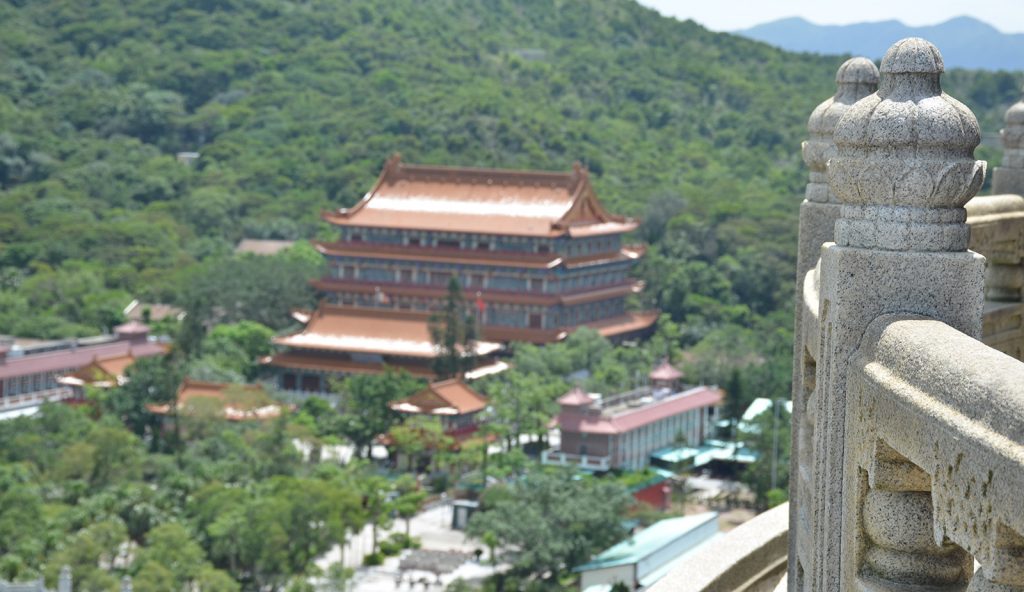The sun was shining on us as we climbed the 268 steps toward the Tian Tan (Altar of Heaven) Big Buddha on Lantau Island, Hong Kong. Paul and I are among the first tourists to climb the stairs in the irenic quiet of morning.
I pause on the way up to take pictures of red and black butterflies chasing one another among the trees and bushes, and sometimes in front of us. It is an action Paul has become accustomed to over the years as I am rarely without a camera.
A temperate wind blows around the three platforms below the base of the Buddha. It is a welcome refuge from the sweltering humidity.
The stone railing encircling each platform is smooth but rough and refreshing to the touch. It has not been honed to a polish. It has been sanded, but does not have an overly garish smoothness of modernity. It is not shiny. It is natural and I can feel the edges where the carver’s tools were placed to make the shapes of a lotus flower. Each baluster is capped with a landing newel and a ball top carved to resemble the three platforms and the statute of the big Buddha.
The stone appears to change its shade depending on the amount of light currently on it. It is gray or tan with specks of black dotting the stone. Each post, ball top and baluster is the same, but different. I run my fingers slowly over the stone and feel the slight imperfections and changes. It is still a masterpiece to behold while taking in the magnificent view.
A few more pictures are taken before I let my camera strap hang off of my left shoulder. I gently move my camera between myself and the rails without taking my eyes off the view. I lean on the edge of the stone railing to take in the scenery, resting my elbows on the cool rock carved with care. My forearm and hands dangle over the edge.
I stretch out my palm and let the breeze blow between the spaces of each finger. Paul reaches up and places his fingers in the spaces as we stare at the artistry below us from atop the peak of Mount Muk Yue. Our eyes consume what is on offer.
Up here, more than 400 meters above the sea, the silence is serene. People move about behind us. We can hear their clothing bristle as they pass by, but few speak. Many are in peaceful contemplation. It is nothing like the Hong Kong skyline and it is perfect.
The Po Lin Monastery rises above the canopy. Still, it is in the shadow of the Big Buddha and surrounding mountain peaks. Its reddish-tan roof is in distinct contrast to the lush green that surrounds it.
On the exterior of the monastery blues, greens, purples, whites, reds, and golds dance and intermingle in intricate designs. I can only see them from on high with my camera’s zoom lens.
I put my camera back down and trace the outlines of the Po Lin Monastery roof with my eyes. The sun shines across it, making a bright, near perfect line, blending into the architecture and appears as if it is designed that way.
As I scan the levels of the monastery, a black kite catches my attention in the distance. I instinctively raise my left hand, and with it, Paul’s right hand and point in the bird’s general direction. It floats above the monastery’s orchid garden before flapping its wings and flying off into the distance toward the Wisdom Path.
Before it disappears from sight, in changes direction and sails into the trees. With squinting eyes, I can barely make out its wings folding as it comes to a rest on a branch and then it is gone, covered by the dense green of Lantau Island.
We spend nearly an hour on the platform before the din of tourism breaks the tranquility the place inspires. From above, it is evident throngs of people are arriving. We turn to leave and bump into a group of teenagers running past.
Everyone is looking for that one picture that will capture their sojourn with the Buddha. My tarriance cannot be summarized as a single element. It is a series of snapshots that my eyes captured and processed into a transcendent experience of a moment in time. And it lives within me.


Leave a Reply